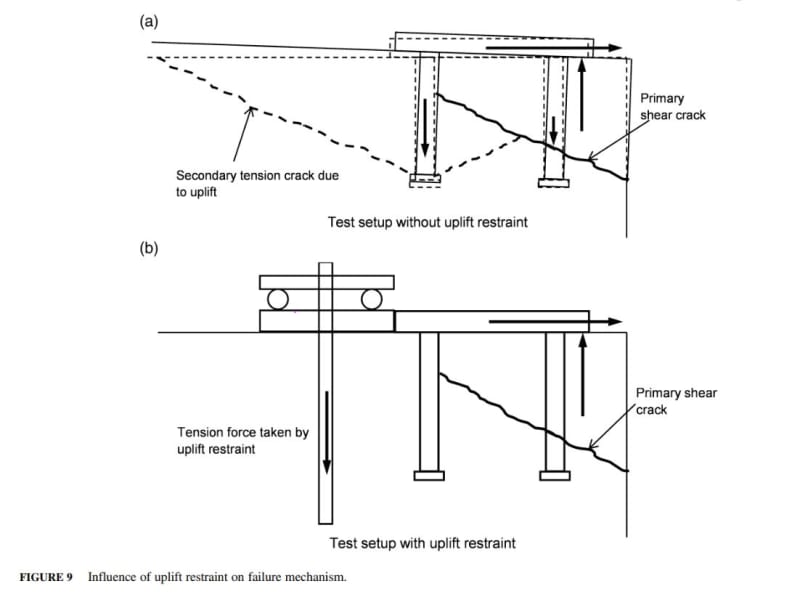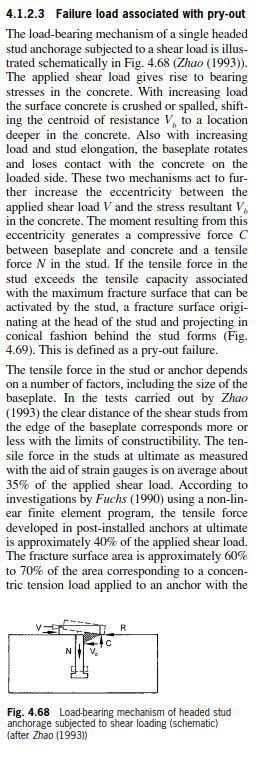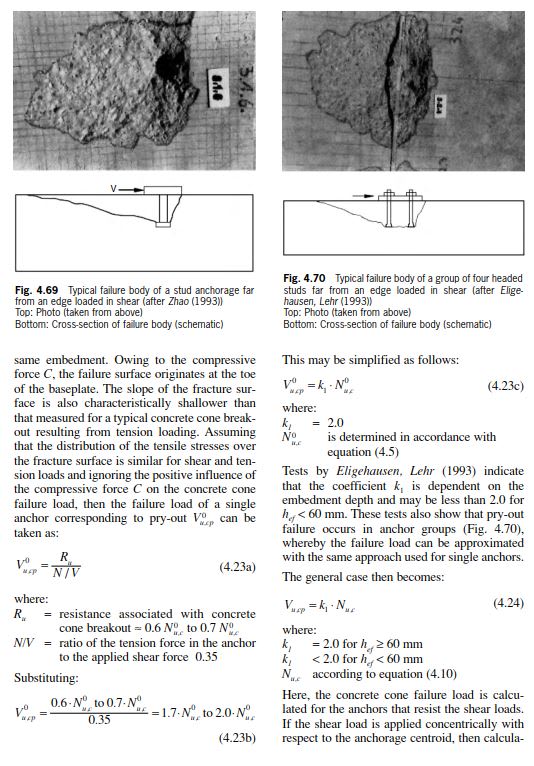I've encountered this same problem when designing large anchorages and have had to dig through the codes and literature before. Once you eliminate tension cone failure and edge breakout either via large edge distances or reinforcing, pryout becomes the governing failure mode (especially when you also consider the combined shear and tension in concrete interaction equations).
Codified guidance world wide on anchoring to concrete is based on the CCD method which has mostly been developed in Europe. Pryout failure is considered as a failure mode in all these codes (I'm not too familiar with CSA however based on your comments sounds like it also considers it). I'd be careful with ignoring pryout as per the Widianto paper - some studies can be found where longer headed shear studs have been found not to exhibit pryout failure past certain h/d ratios, however I note that these studies have been around for almost as long as the CCD method yet omission of pryout has not been adopted in any code. The experiments for these are also typically small groups of studs, and may not reflect a global pryout failure mechanism for larger group anchorages, which is what the standards check. For deeply embedded individual anchors things point to pryout not being a concern, however I've never found any such guidance for anchor groups. You will also not find the 12d rule in any code either as far as I know. The Widianto paper does have some useful and practical examples for detailing and helping see a strut-tie load path.
Some other threads on here have postulated that since pryout capacity is based on tensile cone capacity, reinforcing against cone failure will also reinforce against pryout failure. Intuitively and also if you construct a strut and tie load path, reinforcement of the kind you'd detail to resist tension cone failure would surely do something for pryout - unfortunately as to what that something is, there seems to be no guidance available.
Another fact supporting this is that pryout failure is generated by catenary tension in the anchors due to deformation and rotation of a baseplate under shear force - so the forces causing pryout are a sort of indirect tension. The experimental tests and non linear FEA that the code equations are based on found that tensile force in anchors prior to pryout failure is about 40% of the applied shear load, and the fracture surface is about 60-70% that of the tension cone of an anchor under concentric tension (see book Anchorage in Concrete Construction by Silva et al - great resource). Intuitively based on this, what seems a logical conclusion would be that if you design for this tension force then you can preclude pryout. In the past I've used hooked rebars welded to the back of cast in plates which then lap to other reinforcement (eg closed ties) in the concrete and done a conservative strut and tie design, based on the premise that if you design the rebars to have enough strength to take this tension the pryout will not occur. Note you need reinforcement in the concrete to then develop a feasible strut and tie load path to spread this tension out to your supports (analogy is hanger reinforcement when you are anchoring to the tension side of a beam - the hanger reinforcement takes the load back up to the compressive side). Without this extra reinforcement you've just got a bar in tension which will break out of the concrete. fib bulletin 58 (can be easily found online with a google) is another authoritative source including commentary where you can find more info on pryout.
There is no codified method on checking the struts for these kinds of anchor reinforcement. Recently investigations have begun and can be found in the literature, yet none have made their way to codes yet (and unfortunately as much of the research comes out of Stuttgart, some useful paper are in German). If you try using hooked bars, you can find info about the stresses inside the hook from various resouorces. Theres also a paper "Curved Bar Nodes" by Klein which is freely available from the ACI on this if you really want to get into it.
An easier way to avoid pryout is to simply increase the size and embedment of your anchorage to generate a larger tension cone till you can get it to work based on pryout alone, using say headed cast in anchors. Have you got a sketch of the kind of anchorage you are considering?
More recently there was a paper by Eligehausen et al studying supplementary reinforcement design for anchorages. In the experiments, to preclude pryout failure they had an assembly which prevented rotation of the baseplate and used extra fixings to resolve the tensile force. I'll dig it out tomorrow at work, might be useful for you. Another guide on detailing would be ACI section R25.4.4.2 - its for headed reinforcing bars anchoring into walls or columns however it shows a good strut and tie analogy and how the local phenomena is reinforced against to then resolve via strut and tie into global bending/shear of the concrete element.




